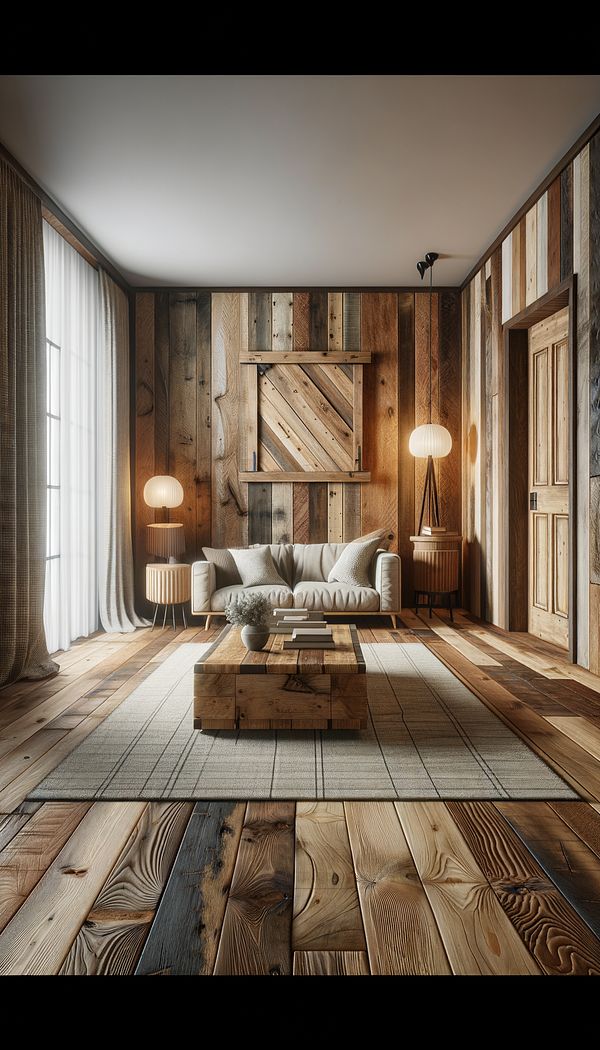What is Reclaimed Wood?
Reclaimed wood is recycled wood that has been repurposed for new uses.
Description
Reclaimed wood refers to wood that has found a second life after its initial use, salvaged from its original application and reprocessed for new projects. This can include wood from old buildings, barns, factories, warehouses, wine barrels, and ships. Typically, reclaimed wood boasts a rich history and unique character, offering an aesthetic that newer materials can't replicate. Its use supports sustainability efforts by reducing the demand for new timber, aiding in the conservation of forests and decreasing landfill waste.
Reclaimed wood is renowned for its durability, strength, and versatility. Due to decades or even centuries of exposure, it often possesses a hardness and density not found in new wood. Furthermore, it exhibits a distinct patina and texture, imbued with unique markings, grains, and colors formed over time. This inherent charm makes reclaimed wood highly prized in both traditional and contemporary interior design. Additionally, employing reclaimed wood aligns with eco-friendly and sustainable design principles, appealing to those looking to reduce their environmental impact.
The process of reclaiming wood involves carefully dismantling structures, meticulously removing nails and other metal fixtures, and then cleaning, kiln-drying, and sometimes planing the wood to prepare it for its new life. The result is a material that is not only historically significant but also environmentally responsible and visually striking.
Usage
Reclaimed wood is used in a variety of interior design projects, including flooring, wall paneling, furniture, and decorative accents. Its rustic appeal is often leveraged in designs aiming for a warm, authentic, and textural aesthetic. In modern contexts, reclaimed wood can provide a compelling contrast when paired with more contemporary materials like metal and glass, adding layers of depth and interest to the design.
FAQs
-
Can reclaimed wood be used outdoors?
Yes, reclaimed wood can be used outdoors, but it should be properly treated and sealed to protect it from the elements. This ensures its durability and longevity in exterior applications.
-
Is reclaimed wood more expensive than new wood?
Reclaimed wood can be more expensive than new wood due to the labor-intensive process of salvaging, restoring, and preparing it for new uses. However, its unique aesthetics and environmental benefits often justify the higher price.
-
How do I care for reclaimed wood furniture?
Care for reclaimed wood furniture by dusting regularly with a soft cloth and avoiding harsh chemicals. For added protection, apply a natural wax or oil periodically. Keep it away from direct sunlight and fluctuating humidity to prevent warping and cracking.
Practical Application
When incorporating reclaimed wood into your design, consider its source and history, which can add a layer of storytelling to your space. Match its rustic charm with complementary materials or contrast it with modern elements for a dynamic interior. Always ensure that reclaimed wood is properly treated to preserve its beauty and longevity, especially if it's being used in areas exposed to moisture.
-
Design Styles478 articles
-
Furniture Types599 articles
-
Decorative Objects240 articles
-
Materials & Textiles360 articles
-
Sustainability & Eco-Friendly Design69 articles
-
ValanceA valance is a decorative piece of fabric used to conceal curtain rods or hardware at the top of a window treatment.
-
Center DrawA center draw refers to a method of opening window treatments, such as curtains or drapes, from the center outward.
-
ValueValue in interior design refers to the lightness or darkness of colors.
-
Kitchen IslandA kitchen island is a freestanding piece of cabinetry that is placed in a kitchen to provide additional countertop space, storage, and sometimes seating.
-
ChevronChevron is a V-shaped pattern used in various design aspects.
